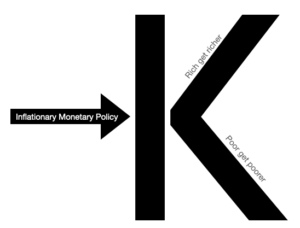One investment philosophy that has grown in popularity is “Because most mutual funds can’t even outperform stock indices, just invest in index funds.” This idea builds on the assumption that “over the long haul, the stock market goes up 10% each year.” Guess what…
The stock market does not go up 10% per year in the long run
- The math is just plain wrong. Lying averages tell us if you average the annual returns of the stock market it will equal its performance… but, as the name implies, it is not true. Lying averages tell you that if you are aiming for a 10% average return, and you have a 20% loss one year, it will take a 30% gain the next year to get back on track. Truthful math will tell you it will take a 50% gain just to get back on track for a 10% average annual return. Think about that in light of the stock market activity in 2000, 2002, and 2007.
- Any returns less than inflation is truly a loss. With inflation currently at 11.58%, you’ll need a 21.58% annual return to grow your wealth at 10% per year.
Just look at the last 10 years of data…
On the chart above, the red line reflects the inflation rate as published by the U.S. Bureau of Labor Statistics. This calculation interestingly excludes certain factors such as the price of oil, food, and in the future, anything else that rises rapidly in price due to inflation. Social Security benefits are increased according to figures based on these BLS calculations (you may as well remove the “L”). Most of us actually eat food and use gasoline, so luckily there are other sources that track inflation as indicated by the blue line.
During the last 10 years, there was a stock boom and bust. Overall, the S&P 500 returned 4.18%. As you can see above, inflation during that time fluctuated between 8% and 12%. If you had invested $100,000 into an S&P 500 index fund from 1998 to 2008, this is how it would look:

…a loss of $37,417. So you lost 37% or 3.7% per year rather than experiencing the mythological 10% return of the market.
What if you could earn a predictable income in excess of 10% annually? Would it be worth wiping the slate clean, dropping the conventional adage, and learning how to understand financial statements and private financial instruments? What if you could build your wealth using methods employed for centuries by the world’s wealthiest individuals?



